Alas, the world did not learn the lessons of World War 1. Many existing tensions between countries were not resolved and new conflicts formed among the countries that emerged after World War 2. Rather than strengthen the League of Nations, countries strengthened their arsenals.
New technologies were incorporated, making World War 2 more deadly than any previous war. Around 73 million people died during World War 2. It truly was a world war, with significant battles fought on every continent except South America and Antarctica.
10 Interesting Facts about World War 2
Bombing from aircraft and torpedoes from submarines signaled that World War 2 was the beginning of a new form of modern warfare. When the United States dropped the atomic bomb on Japan, the most deadly weapon ever created by man had been used.
The most positive lessons and World War 2 facts we can learn are how to build peaceful coalitions so violence on this scale never occurs in the world again.
1. 73 Million People Died in World War 2
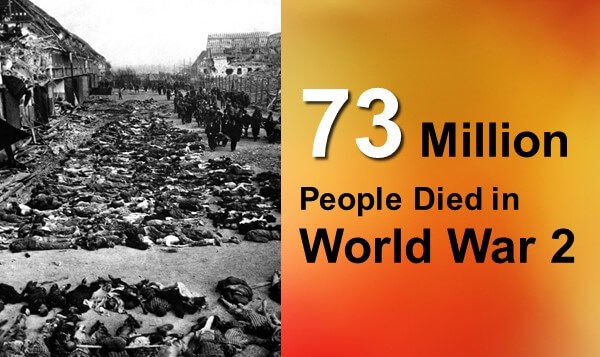
A shocking number of people were killed during the conflict, and these statistics provide us with the saddest facts about World War 2. The horrendous loss of life teaches us that resolving conflicts peacefully is a much better way to use the resources that the world has to offer mankind.
When we look at the number of casualties, we learn that over 45 million civilians were killed on the Allied side. World War 2 facts show that only four million civilians were killed on the Axis side, which included Germany, Japan, and Italy.
These civilian casualties are the most troubling of World War 2 facts and include the deaths of people who were killed in the Holocaust and the bombings of Britain.
World War 2 facts show that there were a high number of military casualties as well. For the Allied forces, including Britain, the United States, and, later, the USSR, over 16 million soldiers lost their lives. For Axis forces, there were over 8 million deaths to military combatants in World War 2.
Putting all of these World War 2 facts together paints a horrible picture of what man is capable of with the modern weapons of war; 73 million people died as a result of World War 2.
2. World War 2 Began in 1937 with a War between China and Japan
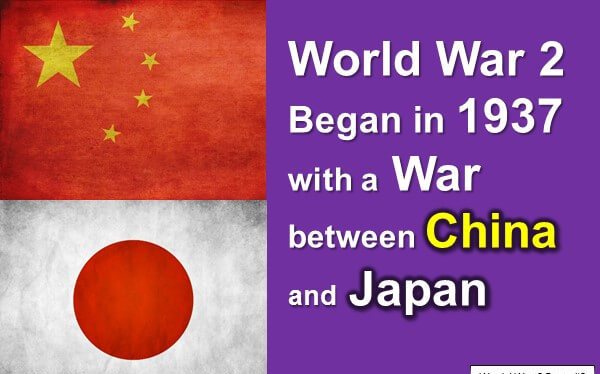
While we commonly believe that World War 2 was fought from 1939 until 1945, World War 2 facts show that it actually began in 1937. At this time, China and Japan were at war in what was called the Second Sino-Japanese War.
Looking at World War 1 facts, we can see that the conflicts of this battle were never completely resolved in Europe and eventually resulted in World War 2. World War 2 facts show that World War 1 led to the formation of new nations, and these new nations would fight a revitalized Germany.
Germany had built up its arsenal after being crushed and humbled by the loss of World War 1, and the punitive treaties put in place following the war.
Many of the underlying tensions of World War 1 remained, and new conflicts between emerging powers also began. However, large-scale violence in Europe during World War 2 did not begin until the invasion of Poland by Germany in 1939.
Many historians point to this invasion as the beginning of World War 2. But, when we look at the World War 2 facts regarding the Second Sino-Japanese War, we see that this war would eventually become part of World War 2.
The war began in 1937 as a result of the imperialist policy of Japan which sought to control China. The United States, the Soviet Union, the British Empire, and, oddly enough, Germany, were all supporting China against Japan.
In 1941, Germany stopped supporting China in the Second Sino-Japanese War and, following the attack on Pearl Harbor, the Second Sino-Japanese War became part of the larger conflict of World War 2.
3. Two Million People Were Killed by Bombings in World War 2
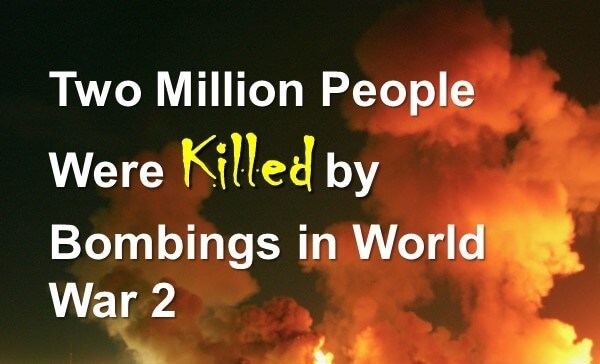
Interesting facts about World War 2 tell us about new technologies used to wage war. World War 1 facts show that airplanes were used during World War 1, but mainly for reconnaissance missions.
Using planes for bombing and shooting enemies was only tested in limited engagements during World War 1. Bombing technology would be tested in the years leading up to World War 2.
In particular, bombing technology was tested during The Spanish Civil War, which was fought from 1936 to 1939. The Germans, who were helping the Nationalist rebels in Spain, used the Civil War as an opportunity to test their bombing technology. This was the first large-scale use of airplane bombing on civilians who were innocent and unable to fight back.
The airplane bombing of Guernica in April of 1937 during The Spanish Civil War was a horrible incident that gave a hint of what was to come in World War 2. The fears and the horror of war that were evident in this bombing were captured in the famous painting by Pablo Picasso, named after the town that was bombed.
The use of bombing on civilians is one of the most horrible parts of World War 2, which sadly seems to have become a norm of warfare in the modern era. During World War 2, bombings of civilians resulted in over two million deaths. World War 2 facts show that civilians in Russia, China, and Japan suffered the most.
4. The Atomic Bomb – 67 Times More Deadly than Any Explosion before WW 2
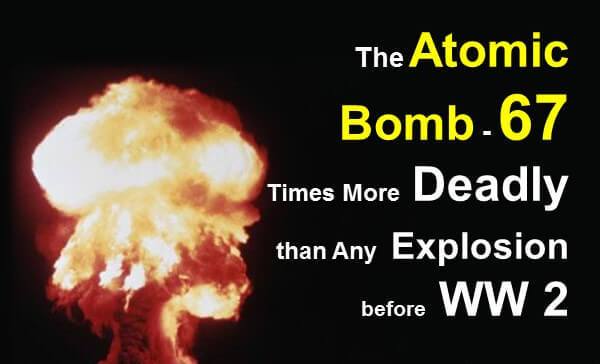
When we look at the deadly power of the atomic bomb, we see that it was capable of killing 135,000 people from the blast and the resulting nuclear fallout.
The world had never seen a single explosion with this amount of deadly force before. Previous explosions of this scale had never existed. Explosions on smaller scales had occurred, but they were largely a result of accidents.
In Halifax, Nova Scotia, Canada on December 6, 1917, there was an accident that involved a cargo ship loaded with military explosives blowing up. As a result of the explosion, almost 2,000 people were killed and many more injured.
When we look at the extreme power of the nuclear bomb, we see that the initial blast, when the bomb was dropped by the United States on Hiroshima, Japan, killed somewhere between 60,000 and 80,000 people. In total, 135,000 people were killed as a result of the blast and the subsequent fallout.
This is 67 times more deadly than the explosion in Halifax. And, unlike the Halifax explosion, the atomic bomb was not an accident. Mankind, at the end of World War 2, had acquired the power to kill in great numbers.
5. September 3 1939: Britain and France Declare War on Germany
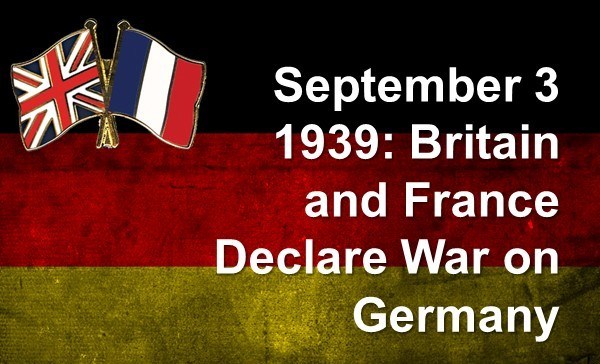
World War 2 facts show that tensions were mounting throughout 1937 in Europe. In March of 1938, Germany took control of Austria, and there was little resistance from the other nations of Europe. Germany began to expand through a series of treaties and threats in coalition with Italy to gain more territory in Europe.
Germany signed a secret pact with the Soviet Union in 1939, which allowed them to split up Poland and establish spheres of influence in Europe. France and Britain declared that they would protect Poland against any invasion.
World War 2 facts show that Germany insisted that Poland hand over territory and guarantee the safety of the German minority in the country. The Polish authorities refused this request and, on September 1 1939, Germany invaded Poland. Two days later, France and Britain declared war against Germany.
War was already raging in the Pacific from the Second Sino-Japanese war, which had begun to heat up in 1937. Conflicts that had lingered from World War 1 and simmered throughout Europe were now boiling over.
World War 2 facts show that the entire world would soon be engaged in the conflicts. Each nation involved would put all its resources into what would prove to be the deadliest war the world had ever seen.
6. The Tripartite Pact of September 27 1940 Unites Germany, Japan and Italy
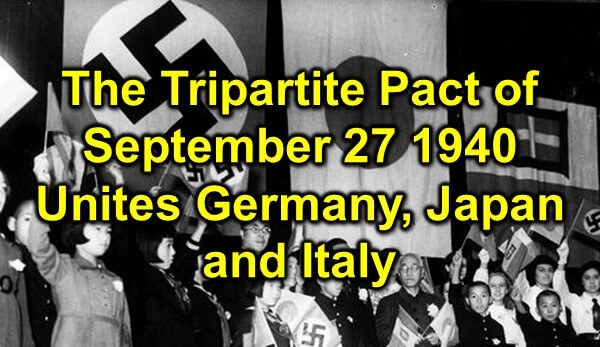
Germany, Japan, and Italy formed the Axis powers through the Tripartite Pact. While Adolf Hitler secretly had plans for world domination, it was in the best interest of Germany to form an alliance with other countries to eliminate any opposition worldwide.
The goal of the Tripartite Pact was to protect the interests of the agreeing parties in the places of the world that they did not occupy. Signed in Berlin on September 27, 1940, the Tripartite Pact was a defensive military alliance.
More countries in Europe would go on to sign the Tripartite Pact, including Hungary, Romania, Bulgaria, Yugoslavia, and, later on, Croatia. The act was in many ways directed at the United States.
Hitler and the leaders of other countries knew to gain power and take over more territory in the world they would eventually encounter, and have to contend with, the United States.
The Tripartite Pact was engineered to take advantage of public sentiment in the United States against entering the war. The hope was that this would encourage the United States to stay out of the war as it would not be able to gain a foothold in any of the regions occupied by the countries who had signed the Tripartite Pact.
While, practically, this did not mean much with regard to the way in which each country conducted the war, it did have some impact on how the war was portrayed.
For instance, after the Japanese declared war on the United States, the other countries of the Tripartite Pact also declared war on the U.S. This was not necessary based on the terms of the Pact but was done as a symbol of unity against the United States.
7. June 22 1941: Germany Invaded the USSR Ending Their Truce
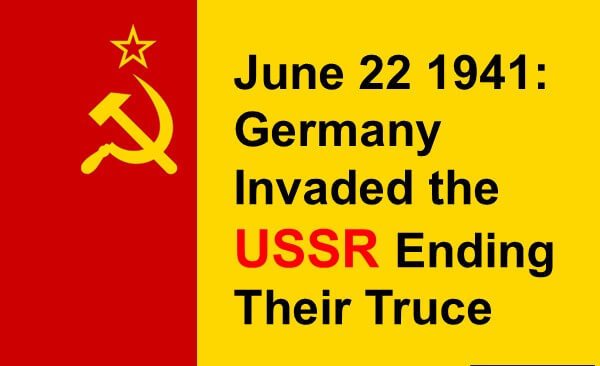
Germany and the USSR were allies in the first stages of World War 2. Neither country wanted to see the high number of casualties that had been inflicted when what was then Russia and Germany fought in World War 1. The USSR was formed, in part, as a result of all the soldiers who died during the first two years of World War 1.
During the early stages of World War 2, the USSR and Germany made agreements to divide up territory including Poland. By establishing spheres of influence, the two countries hoped to expand while avoiding conflicting with each other’s growth.
It was only a matter of time before this strategy proved too shortsighted to last. Germany and the USSR both wanted to control parts of Eastern Europe. After the USSR took control over territory in a disputed area of Romania, the truce between the two countries began to dissolve.
In November 1940, Germany, Italy, and Japan all asked the USSR to join the Tripartite Pact, but Germany thought the USSR asked for too much territory in return. Germany had already been preparing for war with the Soviet Union and, in December of 1940, Hitler made an official order to prepare to invade the USSR.
By the summer of the next year, the Germans were ready and launched their invasion on June 22, 1941. This is one of the surprising World War 2 facts. The Soviet Union and Germany were at war with each other less than two years after they invaded Poland as allies.
8. Roosevelt Had a Secret Plan to Defeat Germany in 1940
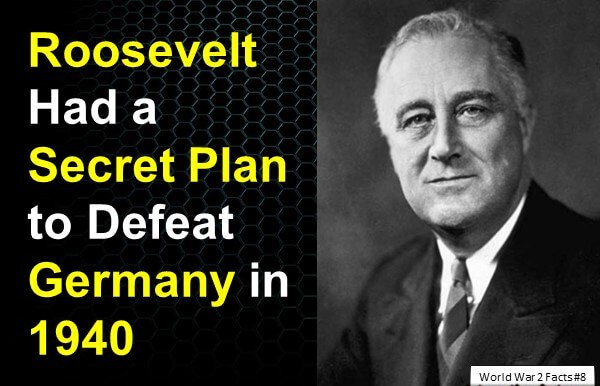
People in the United States were hesitant to enter the conflict. Although United States strategic interests were threatened, members of the U.S. public, like people in the USSR, did not want to see a repeat of the high numbers of casualties that occurred during World War 1.
However, Franklin Roosevelt and other leaders in the United States government were preparing for war. Before the 1941 Attack on Pearl Harbor galvanized public support for the United States to enter the war, Roosevelt and other leaders started planning.
In 1940, they made secret plans with the British about how to conquer Germany in the event of the United States being drawn into the war.
The Manhattan Project, which produced the world’s first atomic bomb, started in 1939, long before the United States knew that it would be used against Japan. The primary motivation for building the atomic bomb was so the United States would have the weapon before Germany.
This was years before the United States officially declared war against Germany. Before the United States entered World War 2, the nation wasn’t actively participating in the war but was preparing to defend itself.
9. U-Boats Sunk 3,000 Ships with Torpedoes in World War 2
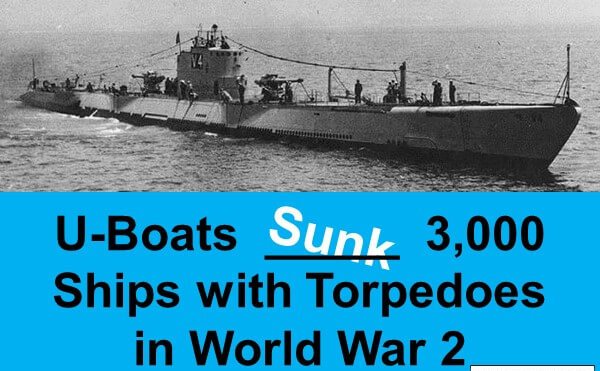
The use of new technologies made warfare even more deadly. We’ve seen how dropping bombs from airplanes was tested as a wartime technology in World War 1 and then used to deadly effect in World War 2, killing over two million people.
Submarine technology, imagined hundreds of years before by Leonardo da Vinci and others, was first put to use on a large scale by Germany during World War 1. During World War 2, German submarines, or U-Boats, became an important part of their naval strategy.
U-Boats used torpedoes and mines to sink military vessels and merchant vessels carrying supplies. One of the more surprising World War 2 facts is that German U-Boats made it across the Atlantic and were up and down the East Coast of the United States from New York City to the Caribbean.
U-Boats using torpedoes sunk 175 military vessels and 2,825 commercial vessels, making a total of 3,000 ships. World War 2 facts show that U-Boats were a force to be reckoned with and they played an important role for Germany in the Battle of the Atlantic.
The Battle of the Atlantic was a large naval campaign that was conducted from 1939 to 1945 and was the longest continual conflict of World War 2.
10. Germany Lost 25% of Its Pre-War Territory after Losing World War 2
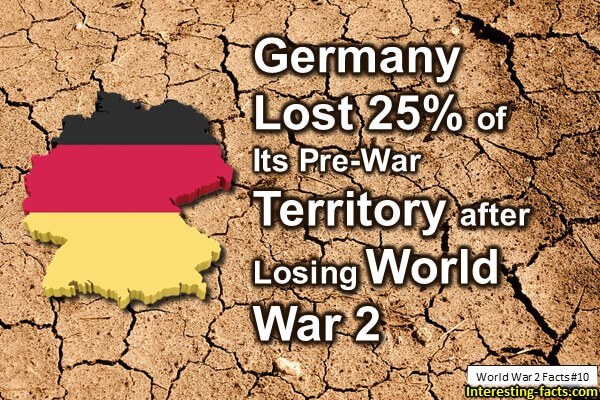
Germany lost more than it gained for its role in another massive conflict. After World War 1, Germany received punitive damages from the Treaty of Versailles, which some historians point to as the trigger for the Holocaust and World War 2.
These historians claim the harsh economic conditions allowed extreme factions in Germany to take control and lead the country into war once again.
There were many other causes for WW2. Tensions among existing countries and the new countries formed by World War 1 were bubbling for some time before they boiled over into war.
China and Japan were involved in a conflict that dated back to the start of the century. The Spanish Civil War showed there were new conflicts forming over political ideologies.
Although Germany was not entirely responsible for the causes leading to World War 2. World War 2 facts show that Germany played the role of aggressor in invading territories in Europe. As a result, after the war, Germany lost 25% of the territory it had in 1937, before WW 2 started.
Related Posts:
Facts about the History of Spain
Facts about the Battle of Somme
Facts about the Vietnam War


